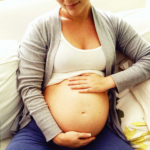Over the last ten or so years, we have noticed a significant increase in the use of ondansetron (marketed as Zofiran) for the treatment of nausea and vomiting during pregnancy (NVP). In a recent issue of Ob-Gyn News, Dr. Christina Chambers reviews the data regarding the reproductive safety of this medication.
Earlier this year, the American Congress of Obstetricians and Gynecologists (ACOG) updated its recommendation regarding nausea and vomiting in Practice Bulletin No. 189: Nausea And Vomiting Of Pregnancy. In Figure 1, the authors provide a hierarchy of therapeutic interventions which attempts to balance reproductive safety and efficacy. According to these recommendations, ondansetron should be used not as a first-line treatment but should be considered when other nonpharmacologic and pharmacologic interventions have failed.
Dr. Chamber notes that the use of antiemetic medications during pregnancy has been steadily increasing since 2001 and that most of this increase is attributable to a rise in the use of ondansetron. In 2014, nearly one-quarter (22.4%) of pregnant women had received a prescription for ondansetron.
In this article, Dr. Chambers reviews several studies, two of them suggesting an increased risk in specific major malformations with exposure to ondansetron and a third reporting no increase in risk:
- National Birth Defects Prevention case control study (2012): NVP itself was not associated with increased risks of malformations. Ondansetron was associated with an increased risk for cleft palate alone based on seven exposed cases (adjusted odds ratio, 2.37; 95% confidence interval, 1.18-4.76).
- Swedish Medical Birth Register (2014): In 1,349 infants exposed to ondansetron in early pregnancy, there was a small increase in risk for cardiovascular defects, particularly cardiac septal defects (any cardiac defect OR, 1.62; 95% CI, 1.04-2.14; cardiac septum defects risk ratio, 2.05; 95% CI, 1.19-3.28).
- Danish National Birth Cohort (2013): In 1,233 infants exposed to ondansetron in the first trimester, there was no increase in risk of major malformations.
Given the conflicting data, it is difficult to draw definitive conclusions. However, what we can say is that the data are consistent with either a small increase increase in risk for certain cardiac defects and/or perhaps cleft palate, or no increased risk at all.
Ruta Nonacs, MD PhD
Safety of ondansetron for nausea and vomiting of pregnancy (Ob-Gyn News)








Leave A Comment